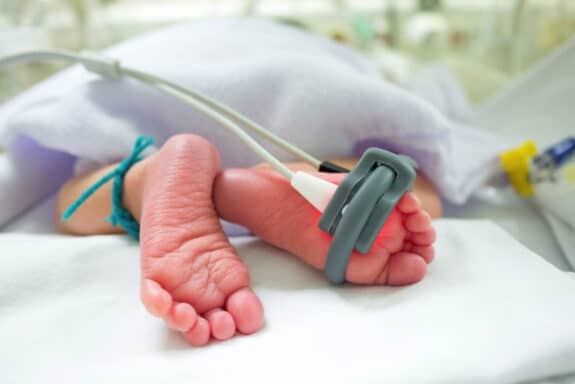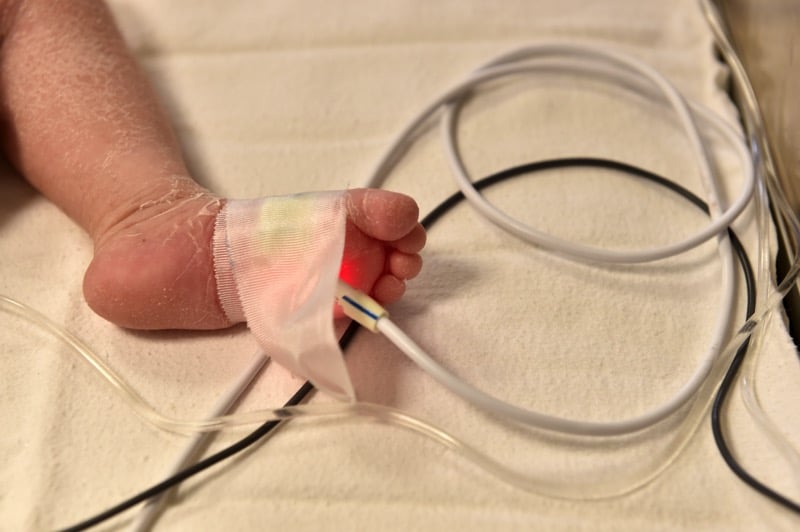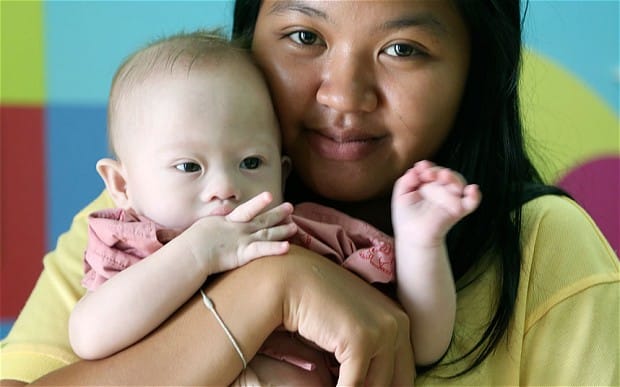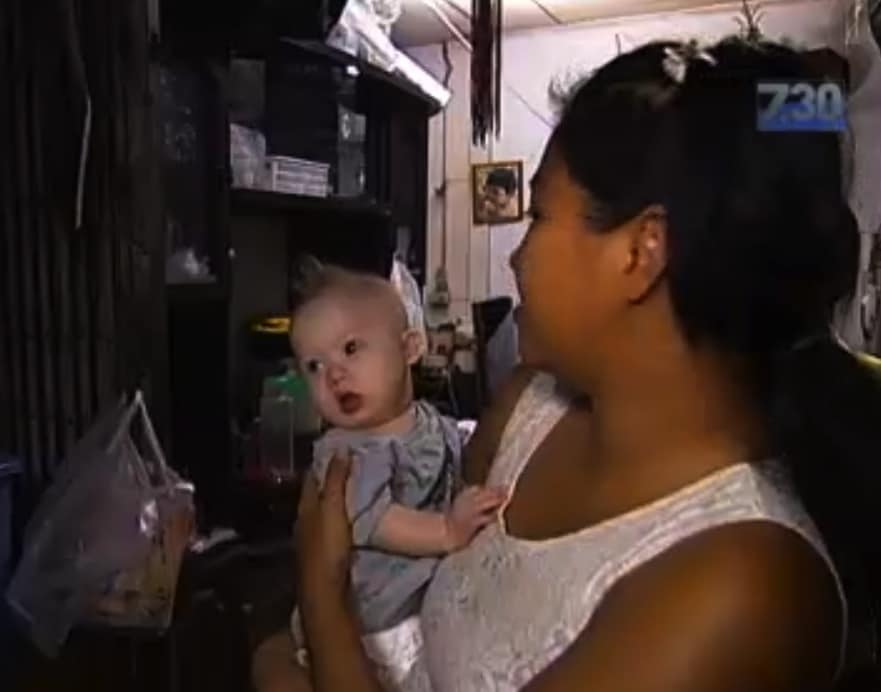While most newborns are born with healthy hearts and adequate oxygen levels in their blood, it is estimated that approximately 1 in every 100 babies is born with a congenital heart defect (CHD). Of those cases, 25% are categorized as critical congenital heart defects (CCHDs). Critical CHDs often lead to low oxygen levels and may require urgent medical intervention within the first year of life. Examples of critical CHDs include coarctation of the aorta, transposition of the great arteries, hypoplastic left heart syndrome, and tetralogy of Fallot.
The Role of Pulse Oximetry
Pulse oximetry, commonly known as pulse ox, is a simple and painless test used to measure the level of oxygen in the blood. It is instrumental in detecting certain types of CCHDs that cause lower-than-normal blood oxygen levels. Early detection through pulse oximetry allows for timely intervention and management, potentially improving the outcome for affected infants.
Importance of Newborn Screening
The American Academy of Pediatrics (AAP) recommends pulse oximetry screening as part of routine newborn assessments to detect CCHDs. Since 2018, policies mandating the screening of newborns have been implemented across all states in the U.S. Despite advancements in prenatal screening through fetal ultrasounds, some cases of CHDs may still go undetected, emphasizing the critical role of postnatal screening in identifying potential heart abnormalities.
Conducting Pulse Oximetry Screening
Newborn pulse oximetry screening involves placing a small, soft sensor on the baby’s right hand and foot, which is then connected to a monitor. This painless procedure takes approximately five minutes and measures the oxygen level in the blood and the heart rate. Screening typically occurs after 24 hours of birth to allow the baby’s cardiovascular and respiratory systems to adjust fully to life outside the womb. Following the screening, healthcare providers discuss the results with the baby’s parents.
Healthy Newborn Oxygen Levels
The normal oxygen saturation range for a newborn pulse oximetry test typically falls between 93% and 97%. Health professionals become concerned when a newborn’s baseline oxygen saturation (SpO2) drops below 93%.
Addressing Screening Results And Additional Testing
If the pulse oximetry screening suggests a potential issue, further testing is necessary before the baby is discharged from the hospital. Additional evaluations may include chest radiography, bloodwork, and a comprehensive echocardiogram performed by a pediatric cardiologist to assess the baby’s heart structure and function. Parents are actively involved in discussions regarding the results and next steps in their baby’s care.
Understanding Screening Limitations
While pulse oximetry screening is an invaluable tool, it may yield false-positive results or fail to detect certain heart defects. Even if a baby passes the screening, parents should monitor for signs such as feeding difficulties, breathing problems, irritability, cyanosis, grunting, and poor weight gain. Always reach out to your healthcare provider quickly if any concerning symptoms arise.
Are At Home Pulse Oximetry Machines Accurate?
At-home pulse oximetry machines can be accurate for babies when used properly and in appropriate circumstances. However, it’s essential to ensure that the device is of high quality and has been properly calibrated. Additionally, the correct placement of the sensor on the baby’s hand or foot is important for accurate readings.
While at-home pulse oximeters can provide valuable information about a baby’s oxygen saturation levels, they should not replace medical evaluation and monitoring by healthcare professionals. If there are concerns about a baby’s oxygen levels or respiratory health, it’s important to seek guidance from a pediatrician or healthcare provider.
Early detection of critical congenital heart defects through pulse oximetry screening is important for at-risk newborns. While the screening is not infallible, it significantly enhances the likelihood of timely intervention and improved outcomes for affected infants.
Related Articles:
- Understanding Intrauterine Insemination (IUI) for Treating Infertility
- Leading Cause of Death in the U.S.: Heart Disease Misdiagnosed in Women
- Understanding Brief Resolved Unexplained Events (BRUE) in Infants







